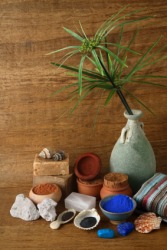Brands Of Makeup and their Origin
Rimmel - London
Benefit - China
Lancome - France
Bobbi Brown - Newyork
Bourjois - France
Chanel - France
Christian Dior - France
Clarins - France
Clinique - France
Clinique - France
Dolce & Gabbana - France
Elizabeth Arden - English
Estee Lauder - France
Giorgio Armani - Italian
Gosh - English
IsaDora - Swedish
L’Oreal - France
Lancome - France
MAC - Canada
Max Factor - America
Nina Ricci - France
Get a natural makeup look with this makeup tutorial. Michelle Phan is brilliant at makeup and is a true inspiration.
http://www.youtube.com/watch?v=OB8nfJCOIeE
Video made by: Michelle Phan
Information of makeup from: www.wikipedia.com
Information on history of makeup: yourdictionary.com
General information: http://www.google.com/
http://www.youtube.com/watch?v=OB8nfJCOIeE
Video made by: Michelle Phan
Information of makeup from: www.wikipedia.com
Information on history of makeup: yourdictionary.com
General information: http://www.google.com/

